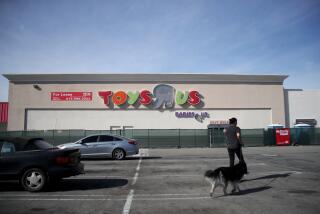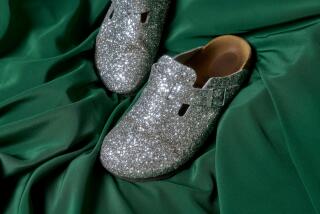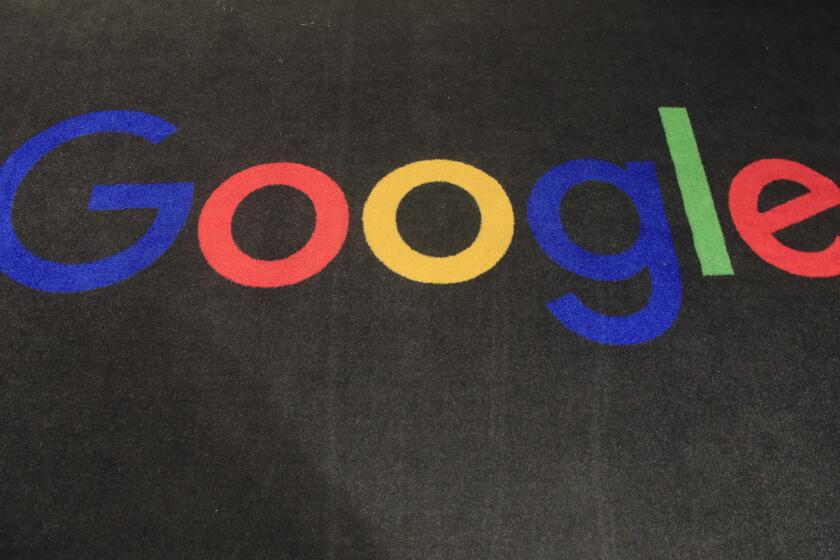Investing: Brown Shoe has been dumping unprofitable assets
- Share via
Question: What’s wrong with Brown Shoe Co.? I am a shareholder.
Answer: Sales at its Famous Footwear chain have been as disappointing as the economy.
That’s why it plans to close about 145 of those stores over the course of this fiscal year that ends in January and into next fiscal year.
It will also close its Brown Shoe Closet stores, F.X. LaSalle stores and Sun Prairie, Wis., distribution center. The sale of its And1 athletic shoe brand was recently finalized.
Brown Shoe shares are down 39% this year after a gain of 41% in 2010. An investor must decide whether the firm’s reduction in unprofitable assets positions it to prosper when the economy does come around.
The company was launched in 1878 by George Warren Brown. It bought the name of the mischievous Buster Brown cartoon character in 1904, then aggressively marketed its brand by sending actors dressed as the Buster Brown character to perform around the country.
There’s now a lot more to this company than most consumers realize:
Brown Shoe’s brands include Naturalizer, Dr. Scholl’s, LifeStride, Sam Edelman, Franco Sarto, Via Spiga, Vince, Etienne Aigner, Vera Wang, Avia, Ryka and, of course, Buster Brown. In retailing, besides Famous Footwear it has the Naturalizer and recently launched Dr. Scholl’s stores.
Sales were down slightly in its fiscal third quarter compared with a year earlier, though profit was up 82% to $33.7 million as it benefited from its sale of And1.
At the reduced Brown Shoe stock price, the consensus Wall Street analyst rating of its shares is between “buy” and “hold,” according to Thomson Reuters, consisting of one “strong buy,” one “buy” and two “holds.”
Diane Sullivan, former chief operating officer, became chief executive in May. In releasing fiscal third-quarter results and reducing the full fiscal year forecast, Sullivan said that despite Brown Shoe’s recent focus on eliminating assets, the company intends to “expand our portfolio over the long term and to deliver enhanced growth.”
The company, whose wholesale business has done better than its retail business, must deal with heavy brand competition and the currency vagaries of overseas manufacturing.
Earnings are expected to increase 4.7% in the current fiscal year and 35% next fiscal year, according to Thomson Reuters. The estimate of a five-year annualized earnings increase of 15% for Brown Shoe is in line with projections for the footwear and accessories industry.
T. Rowe Price New Horizons Fund can be good in small doses
Question: How is T. Rowe Price New Horizons Fund doing?
Answer: Diversified with more than 200 holdings, this fund has outperformed most small-cap growth stock rivals.
Portfolio manager Henry Ellenbogen, who took over in March 2010, previously built a strong record at T. Rowe Price Media & Telecommunications. His predecessor Jack Laporte ran this fund successfully for 23 years.
The $6.9-billion T. Rowe Price New Horizons Fund has a one-year annualized return of 18%, a three-year annualized return of 24% and a 10-year annualized return of 9%. All of these rank near the top of the small growth fund category.
“It has been a tough year, yet New Horizons has done well,” said Katie Rushkewicz, mutual fund analyst with Morningstar Inc. in Chicago. “It is nicely spread among different sectors, but since it is a small-cap growth fund with some inherent risk, it should still make up only a small portion of an overall portfolio — less than 10%.”
Ellenbogen seeks small-cap stocks with durable competitive advantage and proven ability to handle capital. Innovation rates high with him, and he regularly consults with T. Rowe Price analysts. For example, for biotechnology investment he asks the advice of Kris Jenner, portfolio manager of T. Rowe Price Health Sciences Fund. The fund also owns some mid-cap stocks, which means it doesn’t necessarily move in step with small-cap competitors.
“Ellenbogen worked with predecessor Laporte for six months before taking over, which is something we like to see,” Rushkewicz said. He invests between $100,000 and $500,000 of his own money in this fund, according to filings.
Consumer services and healthcare each represent about 16% of the portfolio, with other concentrations in software, business services and industrial materials. Its top holdings were recently O’Reilly Automotive Inc., Pharmasset Inc., FMC Technologies Inc., Panera Bread Co., SXC Health Solutions Corp., Waste Connections Inc., Clean Harbors Inc., Gartner Inc., Roper Industries Inc. and Henry Schein Inc.
This “no-load” (no sales charge) fund has a minimum initial investment of $2,500 and a low initial expense ratio of 0.81%.
Andrew Leckey answers questions only through the column. Write to him at yourmoney@tribune.com.
More to Read
Inside the business of entertainment
The Wide Shot brings you news, analysis and insights on everything from streaming wars to production — and what it all means for the future.
You may occasionally receive promotional content from the Los Angeles Times.









